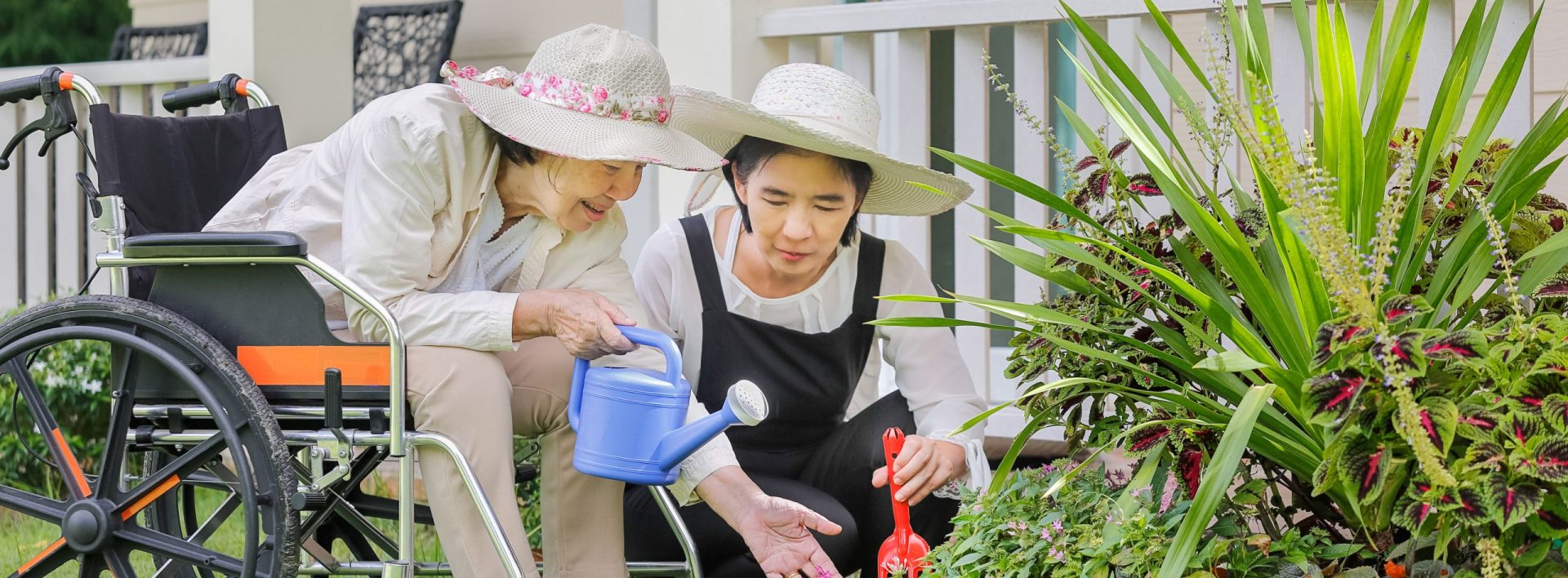
Gardening can be an enjoyable hobby and a great way to add fresh produce into your diet and fresh air to your day. Gardening can still be an accessible activity for wheelchair users, with the right modifications.
Design Your Garden To Meet Your Needs
Knowing how far you can reach, bend over, twist, and how much chair clearance you need is a crucial first step in designing the garden that is right for you. If your garden does not meet your needs, you can find yourself feeling very frustrated, or tiring easily, making it difficult to keep up with the hobby.
Taking the time to thoughtfully lay out your garden will make it much easier for you to tend to your plants and stick with the hobby longer.
When designing (or redesigning) your garden for this spring, make sure the location is accessible to you as well. A handicap ramp can even be used for access if the garden is located off of sidewalks or pathways. Aluminum ramps are safe in wet conditions but you will need to keep the surface clean of debris. Portable ramps can also be used in communal gardens where you may not want to leave your ADA compliant ramp behind. Some gardens may be set up to comply with the American’s with Disabilities Act and have wooden ramps already in place.
If possible, raise your garden beds to between 28-30 inches. This will keep the beds at a comfortable height to reach everything from a seated position. If you have multiple raised beds, make sure that you give yourself at least 36 inches between rows, and enough of a turning radius to move around at ease. Between the raised beds, put down pea gravel, pavers or brick to prevent your mobility device from becoming stuck. Consult local building codes when constructing your garden.
An internet search for “wheelchair accessible gardening beds” will show raised gardening beds that you can roll a wheelchair underneath as well as various DIY guides to build one.
If raised garden beds and wide pathways don’t work with your property, container gardening is a great alternative. There is an abundance of literature and instructional videos to help you get the most out of your garden, in addition to the advice you can get at your local garden supply store.
The Right Tools For The Job
Upgrading your toolbox to include extendable and adaptive tools designed with your physical limitations in mind can provide more comfort and reduce fatigue over traditional tools. Be sure to keep your tools in a convenient place. This could be in a bag that’s kept next to the door closest to your garden, or even on hooks on the underside of your planters.
For more ideas on gardening in a wheelchair, Thrive, a UK charity that assists people with disabilities to start or continue gardening offers many useful suggestions. You can also ask local gardening groups or physical therapists for their suggestions.

Don’t Risk Injury To You Or A Loved One
Why wait? Give us a call at 877-596-7293 or contact us online to get started!